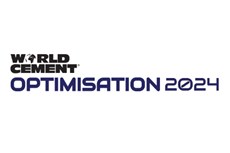HeidelbergCement’s shotcrete used in tunnel construction
Published by Lucy Stewardson,
Editorial Assistant
World Cement,
Shotcrete cement has been used for the Herrschaftsbucktunnel near Rheinfelden. According to HeidelbergCement, the requirements for tunneling are rising steadily. The company’s know-how, forward-looking development work, and extensive portfolio enable the sophisticated construction of these complex projects. The Herrschaftsbucktunnel is an example of this.
“The Herrschaftsbucktunnel is not particularly long, being almost 500 m in length, but the challenges and work preparations are the same as in a tunnel several kilometers in length,” said Roland Arnold, Project Manager of Innsbruck BeMo Tunneling GmbH, which erects shell construction together with its partner in Subterranden. “The tunnel runs under the eponymous hilltop of Herrschaftsbuck. It brings a great relief for the people of the Upper Rhine, who depend on a good infrastructure in the densely populated region. The whole thing is an important breakthrough in the further construction of the A98, which ends at the highway triangle Hochrhein.
Once completed, the twin-tube tunnel will direct the traffic of the East-West connection from the A5 federal highway to the A81 as far as Switzerland.
Engineers chose for the project the ‘new Austrian tunnel construction method’, which does without a tunnel boring machine. “This usually pays off for a longer tunnel,” Arnold explained. “In addition, a road tunnel needs more width than height – in contrast to a railway tunnel with its overhead line. For example, we dredged and blasted two rather egg-shaped tubes into the mountain in the so-called mouth profile.”
Both tunnels were simultaneously driven from the East with a slight advance of the Northern tube (30 m). “From the West, the terrain rises relatively steeply, so that after about 100 m the maximum overlap of between 20 m and 25 m is reached,” said Arnold. “The tube in the direction of travel West becomes 7.5 m wide and gets two lanes. The one to the East, on the other hand, is 11 m wide and received three tracks, as there will also be a threading track. Next to the two tubes, side emergency walkways are arranged. These paths are connected in the middle of the tunnel with a cross pass, so that, in the event of a fire, the other tube can serve as an escape route.
“Travelling through the difficult subsoil posed a great challenge. We had to work through different layers of rock with different properties. Lettenkeuper and Muschelkalk met alternately – plus Gipskeuper and Karst. However, the forecasted amounts of water did not materialise. After every 1.25 m drop, it was essential to secure the freshly eroded tunnel opening immediately, so that any falling rocks did not endanger our workers.”
This backup was done by a layer about 3 in. thick of shotcrete. Only then was the first reinforcement layer set, with the steel lattice arch as a support element. Then comes shotcrete again. The Mineur initially carries around 9 m3 or 20 t of sprayed concrete per spraying process. After a second layer of reinforced and sprayed concrete, approximately 15 cm – 40 cm of shotcrete cover the walls, depending on the propulsion class. Skewers drilled 4 m deep around the so-called roof, i.e. the tunnel ceiling, into the rock, as well as radial anchors add to the tunnel. So it is well secured until the subsidence of the actual inner shell is concreted. The shortcrete was a CEM I 52.5 N (sb) from the Schelklingen part of HeidelbergCement AG. This is characterised by particularly high reactivity.
“In principle, the cement reaction starts in the flight of the shotcrete,” said Dr Klaus Felsch, Product Manager of Transportation Infrastructures at HeidelbergCement in Germany. “The solidification begins immediately after spraying the concrete.”
“The final support system, namely the 60 cm thick concrete inner shell, is installed using mobile formwork carriages with a CEM II A-LL 42.5 N,” said Arnold. “The use of plastic fibres in the concrete serves as fire protection. The use of fire protection concrete for the tunnel shells is now standard.”
In fire-resistant concrete, propylene fibres are mixed in, which are intended to melt in the event of a fire so that vapour pressure is released via the capillary structure in the cementstone. As a result, concrete spills can be minimised and the associated risk to people (victims and helpers) is reduced. In this and similar ways, a large number of construction products and intelligent construction methods make an alternative contribution to safety on the roads.”
Read the article online at: https://www.worldcement.com/europe-cis/15032019/heidelbergcements-shotcrete-used-in-tunnel-construction/
You might also like
Rohrdorfer starts ethylene production from carbon dioxide
Following a test phase, production is to be scaled up to an industrial scale, thereby establishing a seamless CO2 circular economy.


